10 Content Writing Mistakes to Avoid!
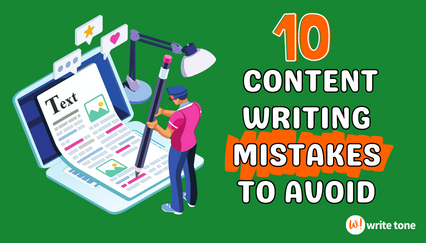
Content writing is a skill that takes time and practice to master. Even experienced writers can make mistakes from time to time. In the digital world, content writing is a powerful tool that helps people understand ideas. From blog posts to marketing materials, good content writing is essential for effective online communication. Every word, sentence, and paragraph are carefully crafted to not only convey information, but also emotions, values, and insights. In today's world, where attention spans are short and information is abundant, mastering the art of content writing is more important than ever.
Here are 10 common content writing mistakes to avoid:
# 1: Lack of Clarity
Content that lacks clarity confuses readers and undermines the message you're trying to convey. To avoid this mistake, ask yourself the following questions:
- What do I want my content to achieve?
- Do I want to inform, persuade, or entertain my audience?
- What is the most important information I want to convey?
- What kind of language will be most effective for my audience?
Having a clear purpose will help you stay focused on your writing. Use simple language, organize your thoughts logically, and present information in a clear and concise manner.
# 2: Ignoring the Audience
One of the biggest mistakes you can make when writing is to ignore your audience. Before you start writing, take some time to understand following:
- Who are you writing for?
- What are their interests?
- What do they know about your topic?
- What do they want to learn?
Once you have a good understanding of your audience, you can tailor your writing to their needs. This means using language that they will understand, and providing information that is relevant and interesting to them. By taking the time to understand your audience, you can make sure that your writing is engaging and effective.
# 3: Poor Structure
A disorganized structure can make your content difficult to follow. Use headings, subheadings, and bullet points to create a logical flow and make your content more reader friendly.
- Headings:
- Subheadings:
- Bullet points:
Use headings to break up your content into manageable chunks. This will make it easier for readers to skim your content and find the information they're looking for.
Subheadings can be used to provide more detail on a particular topic. They can also be used to link related topics together.
Bullet points can be used to list items in a concise and easy-to-read format. They're ideal for highlighting key points or summarizing information.
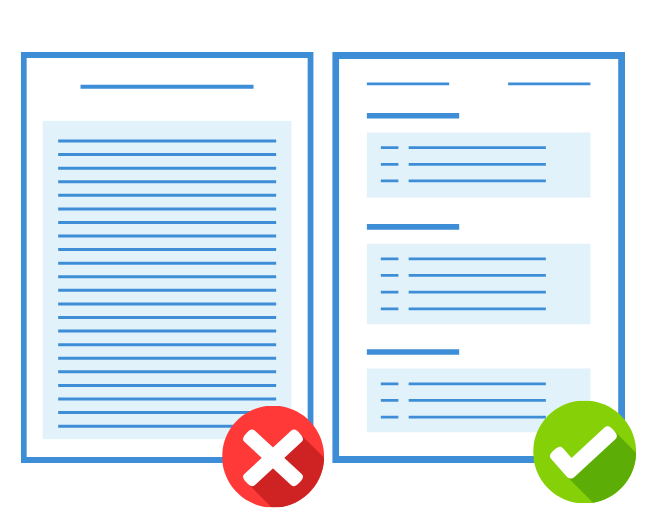
This will make your content more accessible to a wider audience and help you achieve your marketing goals.
# 4 Overlooking Proofreading
Typos and grammatical errors can make your content appear unprofessional. Always proofread your work thoroughly before publishing.
Here are a few tips for proofreading your work:
- Read your work aloud:
- Use a spell checker:
- Ask someone else to proofread your work:
Use headings to break up your content into manageable chunks. This will make it easier for readers to skim your content and find the information they're looking for.
A spell checker can help you catch typos, but it can't catch all errors. So, you should still proofread your work carefully even if you use a spell checker.
A fresh set of eyes can often catch errors that you might have missed.
By following these tips, you can help ensure that your content is free of errors and that it appears professional.
#5 Not Using a Writing Tool Assistant
Writing tool assistants like Write Tone can help you to improve your writing by setting the right tone and choosing the right words. Write Tone can help you with grammar, punctuation, style, and more.
Here are some of the benefits of using Write Tone:
- Improved tone:
- Improved style:
- Improved grammar:
- Improved punctuation:
- More efficient writing:
Write Tone can help you set the right tone of your writing. This can help you to connect with your audience.
Write Tone can help you to improve the style of your writing. This can help you to make your writing more concise, clear, and engaging.
It can identify and correct grammatical errors. This can help you to produce more accurate and professional writing.
It can help you to ensure that your punctuation is correct. This can help you to make your writing more readable and easier to understand.
Write Tone can help you to write more efficiently. This can save you time and effort and allow you to focus on the more important aspects of your writing.
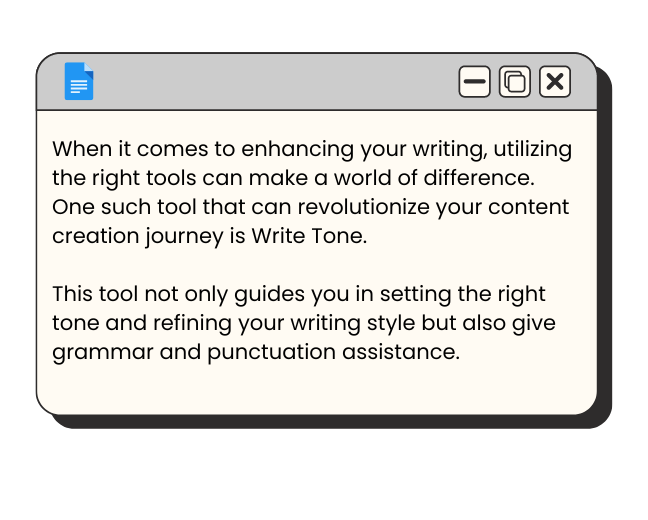
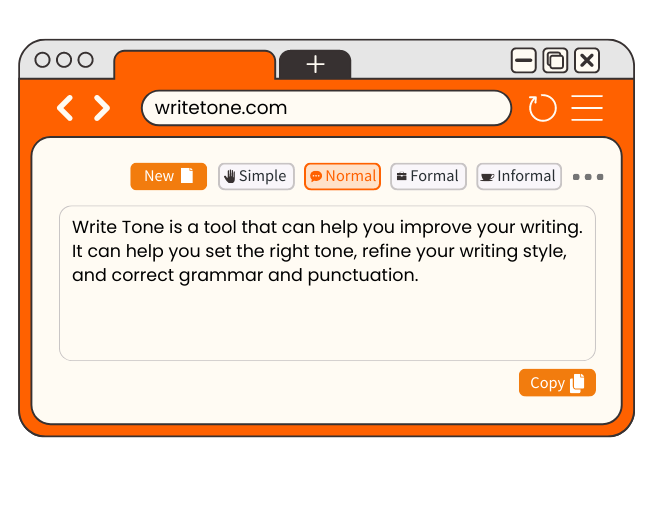
# 6 Keyword Stuffing
While search engine optimization (SEO) is important, keyword stuffing your content can make it sound unnatural and off-putting to readers. Instead, focus on creating valuable content that naturally incorporates relevant keywords. This will help you rank higher in search results, while also providing your readers with high-quality information.
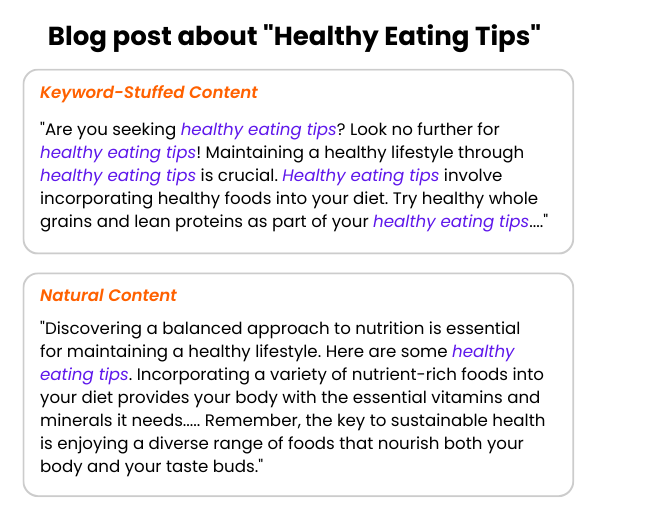
# 7 Using Too Many Clichés
Clichés are overused phrases that can make your writing sound stale and unoriginal. Instead, try to use fresh and original language.
Example: Instead of saying it's raining cats and dogs, you could say the rain is coming down in sheets. Or instead of saying he's a real pain in the neck, you could say he's a real thorn in my side.Using fresh and original language will help your writing stand out and make it more interesting to read.
# 8 Not Using Visuals
Visuals can help to break up your text and make it more engaging for your audience. When you're writing a long article or blog post, it's important to break up the text with visuals, such as images, infographics, and videos. This will help to keep your audience engaged and make your content more visually appealing.
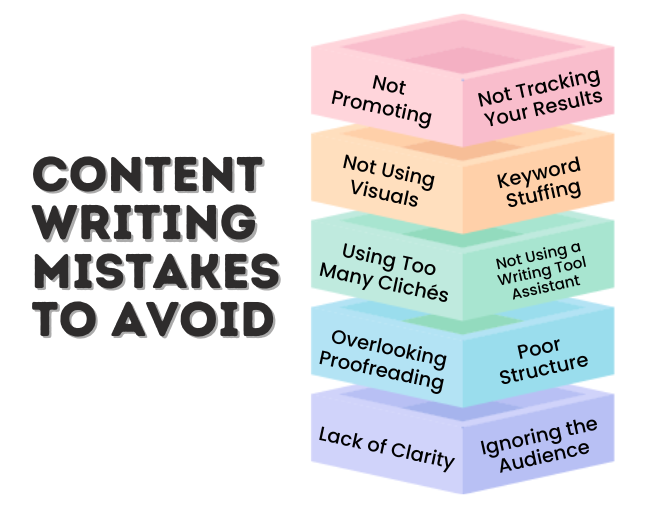
Visuals are a great way to illustrate your points and add interest to your writing. When choosing visuals, make sure they are relevant to your topic and high-quality. You can also use visuals to break up long blocks of text and make your content more readable.
# 9 Not Promoting Your Content
Once you have written great content, you need to promote it so that people can find it. There are several ways to do this, including:
- Sharing your content on social media:
- Submitting your content to relevant websites:
- Reaching out to influencers in your industry:
This is a great way to reach a wider audience and get people to engage with your content. When you share your content on social media, be sure to include a call to action, such as asking people to click on a link or subscribe to your blog.
If you have written a blog post, you can submit it to relevant websites in your industry. This is a great way to get your content in front of a wider audience and drive traffic back to your blog.
If you know of any influencers in your industry, reach out to them and see if they would be interested in sharing your content with their followers. This is a great way to get your content in front of a large audience that you might not otherwise reach.
#10 Not Tracking Your Results.
It is important to track the results of your content marketing efforts so that you can see what is working and what is not. This will help you to improve your content over time and get better results.
Looking for a way to improve your content writing?
Try Write Tone
It is a powerful tool that can help you to write better content that will connect with your audience.
Here are some additional tips for using Write Tone to avoid content writing mistakes.
Use Write Tone to:
- Help you identify the right tone for your audience and purpose.
- Proofread your work for grammar and punctuation errors..
- Help you improve your writing style.
By following these tips, you can use Write Tone to avoid content writing mistakes and write better content that will connect with your audience.
Conclusion:
Content writing is an art form that combines creativity, strategy, and communication. By avoiding common mistakes and practicing your skills, you can write content that captures attention and leaves a lasting impact on readers. Remember, every word you write has the potential to spark curiosity, influence decisions, and shape perceptions.